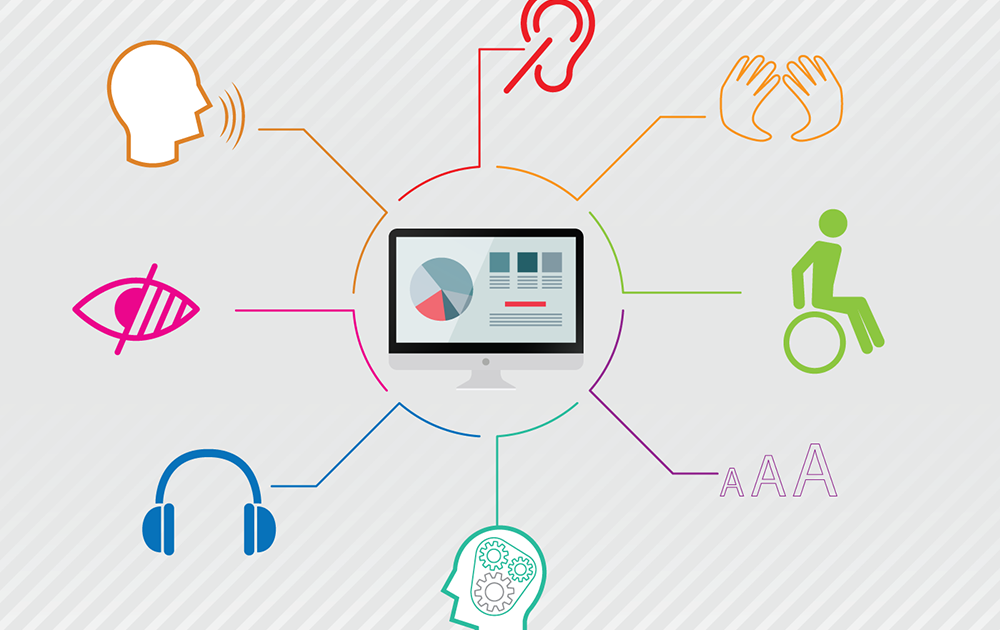Tube Rank: Your Guide to Video Success
Discover tips and insights for optimizing your video presence.
Web Accessibility: Opening Doors to Everyone
Unlock the web for all! Discover effective strategies for enhancing web accessibility and making your site inclusive for everyone today!
Understanding Web Accessibility: Why It Matters for Everyone
Understanding web accessibility is crucial in today's digital landscape, as it ensures that all individuals, regardless of their abilities or disabilities, can access and interact with web content. This concept extends beyond simply meeting legal requirements; it embodies the principles of inclusivity and equality. When websites are designed with robust accessibility features, they not only serve individuals with disabilities but also enhance the user experience for everyone, including older adults and those with temporary impairments. By prioritizing accessibility, we create a digital environment that fosters greater participation and opens up opportunities for all users.
Moreover, web accessibility is beneficial for businesses and organizations as well. Websites that are accessible can reach a wider audience, leading to increased traffic and potential customer engagement. In fact, studies have shown that accessible web design can improve search engine optimization (SEO), which in turn boosts visibility in search results. To encapsulate, prioritizing web accessibility not only affirms the value of inclusivity but also serves as a strategic advantage in the competitive online landscape. Everyone deserves equal access to information and services on the web, and by embracing accessibility, we can create a more equitable world.

Top 10 Web Accessibility Guidelines You Need to Follow
Ensuring your website is accessible to all users is not just a best practice but a legal requirement in many jurisdictions. Following the Top 10 Web Accessibility Guidelines is crucial for creating an inclusive online experience, allowing individuals with disabilities to navigate, understand, and interact with your content effectively. These guidelines are rooted in the Web Content Accessibility Guidelines (WCAG) and can greatly enhance usability for everyone, regardless of ability.
- Text Alternatives: Provide text alternatives for non-text content to ensure it can be converted into other forms, like large print or Braille.
- Time-Based Media: Include captions for videos and transcripts for audio recordings to accommodate various user needs.
- Adaptable: Create content that can be presented in different ways without losing information or structure.
- Distinguishable: Make sure text is readable and distinguishable, ensuring sufficient contrast between text and background.
- Keyboard Accessible: Ensure all functionalities are accessible via a keyboard, as many users cannot use a mouse.
- Readable: Create content that is easy to read and understand, using plain language when possible.
- Predictable: Ensure that web pages behave in predictable ways, which helps users navigate your site.
- Input Assistance: Provide guidance to help users avoid and correct mistakes in forms.
- Compatible: Maximize compatibility with current and future user agents, including assistive technologies.
- Accessible Navigation: Design a navigation structure that is intuitive and allows users to find what they need easily.
How Can Web Accessibility Improve User Experience for All?
Web accessibility refers to the practice of making websites usable for individuals with disabilities, but its benefits extend far beyond this demographic. By designing with accessibility in mind, businesses can create an inclusive digital environment that enhances the overall user experience for everyone. For instance, features such as alternative text for images, clear navigation, and appropriately sized text can significantly improve accessibility for users with visual impairments, elderly users, and those using mobile devices. Moreover, these enhancements not only support accessibility standards but are also favorable for SEO rankings, as search engines favor websites that prioritize user experience.
Beyond technical enhancements, implementing web accessibility fosters a more positive and engaging user experience. When users find a site easy to navigate and interact with, they are more likely to stay longer, absorb the content, and convert. An accessible website can reduce barriers to information and interaction, ensuring that all users, regardless of their abilities, can benefit from the content provided. In essence, prioritizing web accessibility not only supports compliance with legal requirements but also demonstrates a commitment to inclusivity, which can lead to greater customer satisfaction and loyalty.